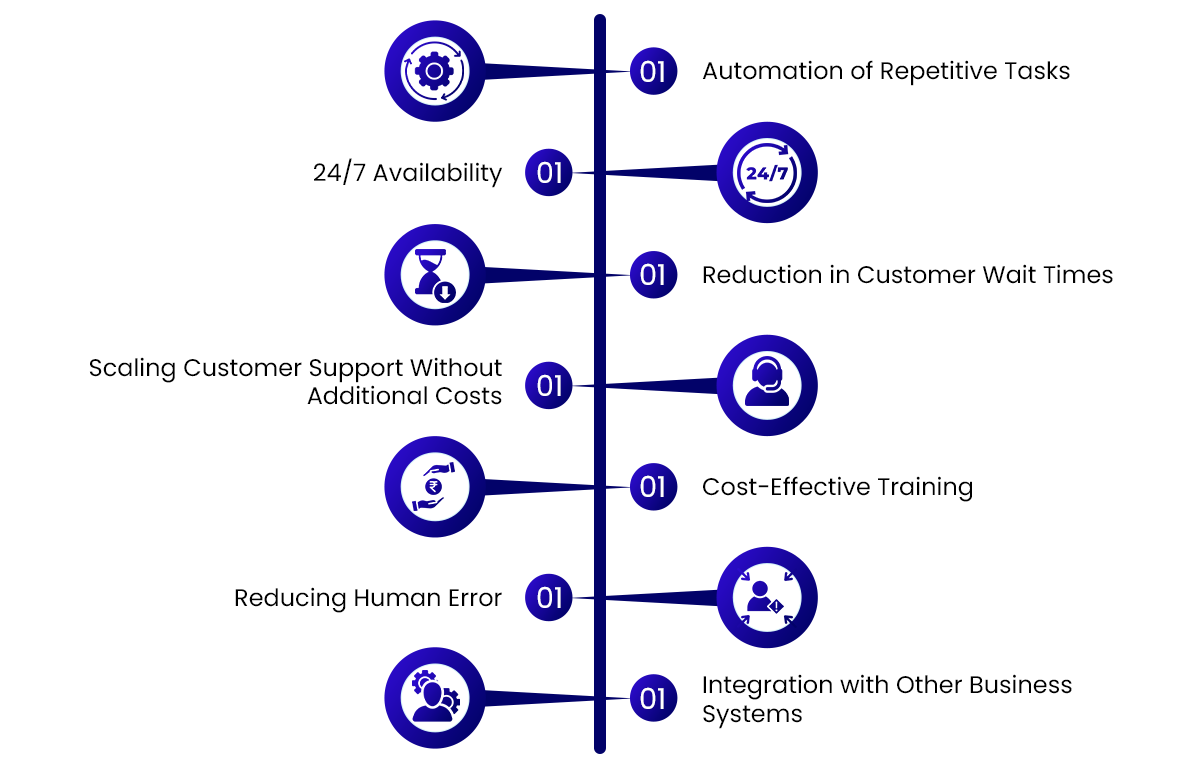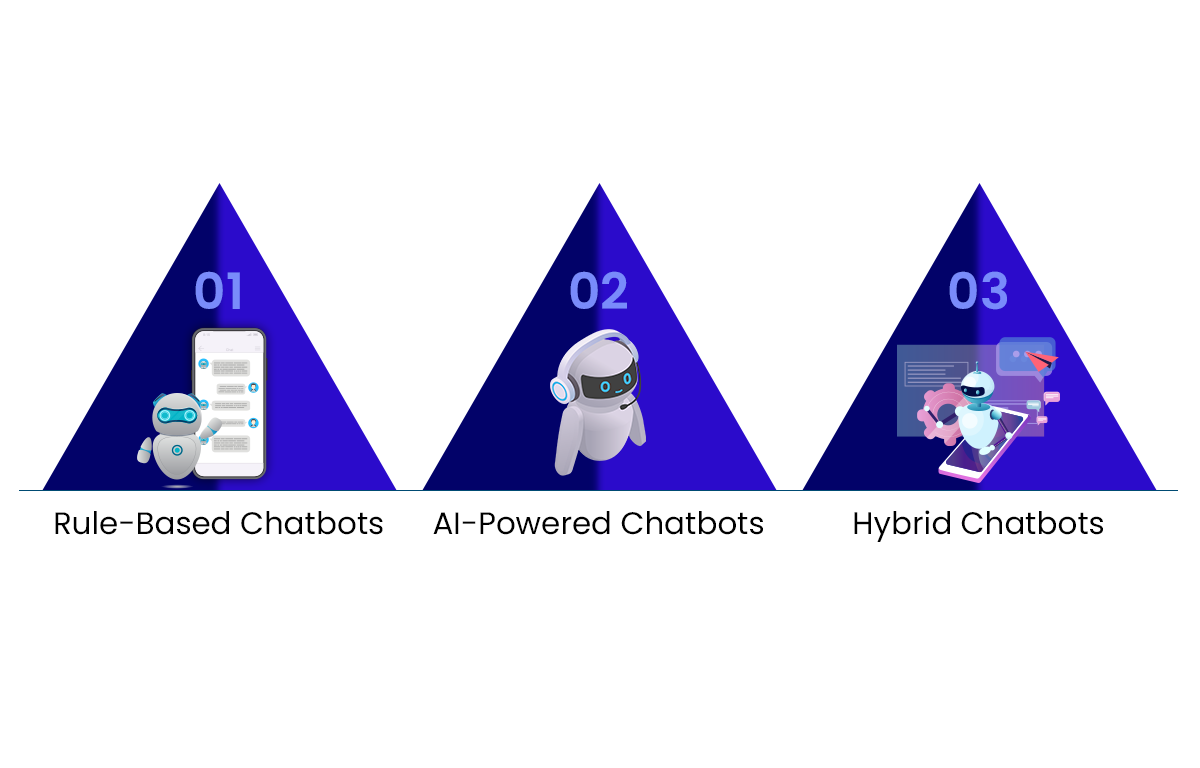In today's business world, companies are constantly looking for ways to improve efficiency while reducing costs. One area where businesses often spend a significant amount is on customer support.
Here are some customer service cost benchmarks:
- Large companies: About 39% manage to keep their customer service costs at 5% or less of their annual recurring revenue (ARR).
- Medium-sized companies: 22% spend between 5% and 10% of ARR on customer service, while 35% keep it below 5%.
- Small companies: Support costs are spread fairly evenly across different spending levels — from over 30% of ARR to under 5% — except that about 25% sit in the 10% to 15% range.
Traditional customer service can be expensive, time-consuming, and prone to human error. But what if there was a way to provide customer support 24/7, at a fraction of the cost?
With advancements in AI technology, businesses are increasingly turning to AI chatbots—and even AI Voicebots —to handle customer inquiries and support requests around the clock. This not only helps reduce costs but also provides a more seamless experience for customers.
In this article, we'll dive into how AI-powered chatbots can cut support costs and improve service quality. We’ll look at everything from how they work to how businesses can implement them effectively.
The Growing Need for Cost-Efficient Customer Support
Customer support is essential to any business, but it comes with a hefty price tag. The cost of hiring, training, and managing a team of customer service agents can add up quickly.
Despite this growing need, customer support teams often face challenges. They are under pressure to respond quickly to an increasing volume of inquiries, and managing customer expectations is no easy task. On top of this, many businesses struggle to maintain quality support service while controlling costs. Implementing conversation quality analysis can help identify areas for improvement, ensuring interactions are effective, consistent, and aligned with customer expectations. To address these challenges, implementing call quality monitoring can help businesses monitor interactions, identify areas for improvement, and ensure consistent, high-quality support while optimizing resources.
That's where AI chatbots come in.
By automating a large portion of customer service tasks, AI chatbots can reduce the need for human intervention. With 24/7 availability, they can handle multiple inquiries simultaneously, improving response times and reducing wait times for customers.
How AI Chatbots Cut Support Costs
AI chatbots are an intelligent solution to the problems businesses face with traditional customer support. They can handle everything from simple FAQs to more complex issues, all while cutting operational costs. Here's how:
1. Automation of Repetitive Tasks
AI chatbots are designed to handle repetitive tasks that would otherwise require a human agent, such as answering common questions or directing customers to the right department. By automating these tasks, businesses can free up their customer service agents to focus on more complex issues.
For instance, imagine your company receives hundreds of customer inquiries every day about the status of an order. An AI chatbot can provide instant updates on order status, saving agents time and reducing the number of support tickets that need to be handled manually.
2. 24/7 Availability
One of the main advantages of AI chatbots is that they are available around the clock. Unlike human agents who need rest, chatbots can work 24/7, handling customer inquiries even when your office is closed. This ensures that customers can always get help when they need it, without the need to hire additional staff for night shifts or weekends.

3. Reduction in Customer Wait Times
Many customers are really bothered by having to wait a long time. According to Zendesk, support agents who use AI are 20% more likely to feel empowered to do their job well. With AI chatbots, businesses can provide immediate responses to customers, eliminating long wait times and enhancing customer satisfaction.
4. Scaling Customer Support Without Additional Costs
AI chatbots are highly scalable, meaning they can handle thousands of conversations simultaneously. This is a significant advantage over human agents, who can only handle one customer at a time. As your business grows, you won’t need to continuously hire more customer service agents to keep up with demand. Instead, the chatbot can scale with your business, handling a higher volume of inquiries without additional costs.
5. Cost-Effective Training
Training a human support agent is a time-consuming and expensive process. Chatbots, on the other hand, can be trained in a fraction of the time and without the need for ongoing training sessions. Once the chatbot is set up, it can continuously learn from interactions and improve its performance over time.
6. Reducing Human Error
While human agents are prone to making mistakes, chatbots can provide consistent, accurate responses every time. This reduces the likelihood of misunderstandings or incorrect information being passed along to customers, improving overall service quality.
7. Integration with Other Business Systems
Modern AI chatbot is designed to integrate with other business systems, such as customer relationship management (CRM) tools and knowledge bases. This integration allows chatbots to access up-to-date information and offer more personalized responses. For example, a chatbot could pull up a customer’s order history or account details, allowing it to provide tailored support without human intervention.
Types of AI Chatbots in Customer Service
Not all chatbots are created equal. There are different types of chatbots, each suited to different needs. Here are the most common types used in customer service:

1. Rule-Based Chatbots
These chatbots follow a predefined set of rules to respond to customer inquiries. They are often used for basic, straightforward tasks like answering FAQs or providing product recommendations. Rule-based chatbots are limited in their capabilities but are easy to implement and cost-effective for handling simple tasks.
2. AI-Powered Chatbots
AI-powered chatbots, on the other hand, use machine learning and natural language processing (NLP) to understand and respond to customer inquiries in a more human-like manner. These chatbots can handle more complex queries and improve over time by learning from previous interactions. They can also be integrated with back-end systems to provide personalized support.
3. Hybrid Chatbots
Hybrid chatbots combine the best of both rule-based and AI-powered chatbots. They can handle simple tasks using predefined rules but switch to AI-powered responses when more complex issues arise. Hybrid chatbots are ideal for businesses that need both scalability and flexibility.
How Do AI Chatbots Actually Work in Customer Support?
Understanding the nuts and bolts isn’t just for techies. Here’s a simple breakdown:
Natural Language Processing (NLP)
This lets the bot understand the intent behind what someone types, even if the language isn’t perfect or uses slang.
Integration with Business Systems
Chatbots can pull up order info, appointment details, product specs, and more—just like human agents.
Conversation Memory
Good bots remember past exchanges, which means they can personalize each conversation. This is why you might see a bot greet you by name or reference your last order.
Escalation Paths
If a bot can’t help, it hands things off to a real person with all the details already filled in, saving time for both sides.
Beyond Cost: Other, Sometimes Overlooked Benefits
- Instant Response Boosts Loyalty: People remember when they don’t have to wait for help. This keeps them coming back.
- Business Insights: Bots log every conversation, helping you spot trends, product glitches, or recurring needs fast.
- Better Employee Morale: Teams spend time on bigger issues, learn new skills, and aren’t bogged down by repetitive tasks.
- Easy Multilingual Support: Bots can be set up to support multiple languages easily—important if your customers are global.
How to Implement AI Chatbots for Your Business
Implementing AI chatbots into your customer service operations doesn’t have to be difficult. Here’s a simple step-by-step guide you can follow:
Step 1: Define Your Goals
Before implementing an AI chatbot, it’s important to define what you want to achieve. Do you want to reduce customer service costs? Improve response times? Increase customer satisfaction? Understanding your goals will help you choose the right type of chatbot and ensure it meets your business needs.
Step 2: Choose the Right Platform
There are many chatbot platforms available, each offering different features and integrations. Some popular platforms include Dialogflow, Tars, and LiveChat. Consider factors like ease of use, customization options, and integration with your existing systems when choosing a platform.
Step 3: Train Your Chatbot
Once you've chosen a platform, you'll need to train your chatbot. This involves feeding it data so that it can understand common customer inquiries and provide relevant answers. The more data you provide, the better the chatbot will perform.
Step 4: Test and Monitor
After training the chatbot, it’s important to test it before going live. Ensure it handles common inquiries properly and doesn’t make mistakes. Even after it’s live, monitor its performance and make adjustments as needed. AI chatbots learn over time, so it’s important to keep an eye on their progress.
Step 5: Integrate with Your Systems
For a seamless customer experience, integrate your chatbot with your CRM, help desk software, and other relevant systems. This will allow the chatbot to pull up customer data and provide more personalized responses.
Common Questions Asked by People About AI Chatbots
Q: Are AI chatbots expensive to implement?
A: While there is an initial setup cost, AI chatbots are typically more cost-effective in the long run, as they reduce the need for human agents and scale easily.
Q: Can AI chatbots replace human customer service agents?
A: AI chatbots can handle many tasks, but there will always be situations where human agents are needed. However, chatbots can significantly reduce the workload of human agents by handling simpler tasks.
Q: How do AI chatbots improve customer experience?
A: AI chatbots provide instant responses, reduce wait times, and can handle inquiries 24/7, improving the overall customer experience.
Q: What functions do AI-powered chatbots perform in customer service?
- Answer common questions
- Troubleshoot basic issues
- Guide purchases
- Personalize responses
- Provide 24/7 support
- Escalate complex issues to human agents
Q: In which fields do AI-powered chatbots often provide customer support?
- Banking
- E-commerce
- Retail
- Telecommunications
Q: Can AI chatbots provide emotional support?
A: They can detect emotions and respond empathetically, but deeper emotional support usually requires a human agent.
Conclusion
AI chatbots offer a compelling solution for businesses looking to cut support costs while maintaining high-quality service.
By automating repetitive tasks, offering 24/7 availability, and scaling effortlessly, chatbots can save businesses money and improve customer satisfaction. As AI technology continues to evolve, chatbots will only become more capable, offering even greater value to businesses and customers alike.If you want to take your customer service to the next level and reduce operational costs, implementing AI chatbots is a step in the right direction.


.webp?lang=en-US&ext=.webp)

.webp?lang=en-US&ext=.webp)

